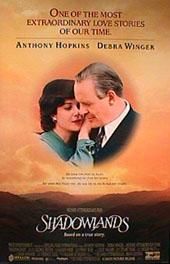Who Goes to the Movies?
Source: MPAA U.S./Canada Theatrical Market Statistics, Attendance Demographics for 2011, March 2012
All of these figures apply to Americans and Canadians seeing movies in theaters in 2011, the last year for which statistics are available. The MPAA will publish a new study of movie attendance in March 2012.
All Moviegoers by Age Group, 2011
| AGE | PERCENTAGE OF MOVIEGOERS | PERCENTAGE OF POPULATION |
| 2-11 | 15% | 14% |
| 12-17 | 10% | 8% |
| 18-24 | 12% | 10% |
| 25-39 | 24% | 21% |
| 40-49 | 14% | 14% |
| 50-59 | 12% | 14% |
| 60+ | 13% | 19% |
Most Frequent Moviegoers by Age Group, 2010
| AGE | PERCENTAGEOF MOVIEGOERS | PERCENTAGEOF POPULATION |
| 2-11 | 7% | 14% |
| 12-17 | 16% | 8% |
| 18-24 | 19% | 10% |
| 25-39 | 28% | 21% |
| 40-49 | 9% | 14% |
| 50-59 | 9% | 14% |
| 60+ | 12% | 19% |
The movie audience in the U.S. and Canada is getting slightly older, with a few more older people age 60 and up going to movies (see “All Moviegoers by Age Group”). Meanwhile, teenagers are going to less movies, and children age 2-11 are going to even less movies (when compared to last year).
Even so, the age groups that also include parents and their children, 2-39, make up 61% of all moviegoers, but only 53% of the U.S./Canadian population, according to the MPAA. Also, for the first time MOVIEGUIDE® can recall, moviegoers age 18-39 make up the bulk of frequent moviegoers, 47% percent, compared to only 35% for frequent moviegoers aged 12-24 according to the chart titled “Most Frequent Moviegoers by Age Group.”
Also for the second year in a row, youths age 12-17 make up less than half of that 35%. Hollywood is starting to lose the interest of the younger youth audience. However, they have a lot of competition these days from Cable TV networks like the Disney Channel and Nickelodeon, which in recent years has helped launch the careers of many teenage celebrities.
Finally, the MPAA estimates there are about 35 million frequent moviegoers in the United States and Canada, with frequent female moviegoers purchasing fewer tickets in 2011 and frequent male moviegoers purchasing more tickets when compared to previous years.
Here, it is very interesting to note that, instead of peaking between the ages of 18-24, as was typical, frequent moviegoing peaked at ages 25-39 in 2011, when a significant 9.7 million frequent moviegoers were aged 25-39 but only 6.6 million frequent moviegoers were aged 18-24, 5.7 million aged 12-17, and 2.5 million aged 2-11. The last number is a decrease of 11% in 2011 when compared to 2009. The Demographic Winter of fewer children and fewer two-parent families that’s finally slammed the United States is clearly hurting the number of frequent moviegoers among youths aged 2-24.
Admissions by Rate of Moviegoing, 2011
| FREQUENCY | PAID ADMISSIONS |
| Frequent (12+ a yr.) | 50% |
| Occasional (2-11 a yr.) | 48% |
| Infrequent (1 or less) | 2% |
Admissions by Rate of Moviegoing, 2010
| FREQUENCY | PAID ADMISSIONS |
| Frequent (12+ a yr.) | 51% |
| Occasional (2-11 a yr.) | 47% |
| Infrequent (1 or less) | 2% |
Those who habitually see movies in the U.S. and Canada accounted for 50% of total box office admissions in 2011. This is a significant decline of nearly 39.8% compared to 2006, when 83% of total ticket sales were frequent moviegoers. Occasional moviegoers are accounting for a higher and higher proportion of the moviegoing audience.
It’s way too early to see this last number as a trend. Clearly, however, skyrocketing ticket prices have had a bad effect on moviegoing in recent years.
Frequency of Moviegoing, 2011
| FREQUENCY | PERCENT OF POPULATION |
| Frequent (12+ a yr.) | 10% |
| Occasional (2-11 a yr.) | 47% |
| Infrequent (1 a yr. or so) | 10% |
| Never | 33% |
About 33% percent of Americans and Canadians never went to see a movie in theaters in 2011, compared to 32% in 2010 and 26% in 2006. Of those who do see movies, only 10% go 12 or more times each year, 47% see up to 11 movies, and 10% people go infrequently, about one movie each year.
Tickets Sold Among the Sexes, 2011
| SEX | TICKETS SOLD |
| Males | 50% |
| Females | 50% |
According to the MPAA, females purchased much fewer movie tickets in 2011 and 2010 in the U.S. and Canada compared to 2009, going from 55% of movie tickets sold to 50% of tickets sold. Males purchased more tickets in 2011 and 2010 compared to 2009, from 45% of the tickets sold to about 50%.
Tickets Sold by Ethnicity, 2011
| Ethnicity | TICKETS SOLD | PERCENT OF POPULATION |
| White | 58% | 65% |
| Hispanic | 22% | 16% |
| Black | 11% | 12% |
| Other | 9% | 7% |
Tickets Sold by Ethnicity, 2010
| Ethnicity | TICKETS SOLD | PERCENT OF POPULATION |
| White | 56% | 66% |
| Hispanic | 26% | 16% |
| Black | 11% | 12% |
| Other | 7% | 6% |
Hispanics bought a higher percentage of tickets in 2011 (22%) (up from 21% in 2009). However, they bought fewer tickets in 2011 than in 2010. They still have the highest moviegoing per capita compared to whites and blacks.
Although the percentage of whites buying movie tickets went up slightly, ticket sales among whites in the U.S. and Canada continued to decline numerically in 2011, from 750 million tickets in 2010 to 742 million in 2011. They bought about 909 million tickets in 2007 and 845 million in 2009, according to MPAA reports.
Meanwhile, internationally, box office for all movies outside the U.S. and Canada increased overall about 6.7% in 2011, compared to an 11.7% increase in 2010. Also, a significant increase in box office occurred among moviegoers in Latin America, going from $2.1 billion to $2.6 billion, a 24% increase. Asia Pacific saw a 6% increase.
Finally, for the second year in a row, box office in Europe, the Middle East, and Africa accounted for less than half (48%) of the total international box office.
Note: Variety has numbers for total domestic and overseas box office for 2012 (published elsewhere in this Annual Report), but MOVIEGUIDE® waits for the MPAA in March each year to determine the demographic makeup of the audiences and frequent moviegoers attending the cinema.
Now more than ever we’re bombarded by darkness in media, movies, and TV. Movieguide® has fought back for almost 40 years, working within Hollywood to propel uplifting and positive content. We’re proud to say we’ve collaborated with some of the top industry players to influence and redeem entertainment for Jesus. Still, the most influential person in Hollywood is you. The viewer.
What you listen to, watch, and read has power. Movieguide® wants to give you the resources to empower the good and the beautiful. But we can’t do it alone. We need your support.
You can make a difference with as little as $7. It takes only a moment. If you can, consider supporting our ministry with a monthly gift. Thank you.
Movieguide® is a 501c3 and all donations are tax deductible.

Now more than ever we’re bombarded by darkness in media, movies, and TV. Movieguide® has fought back for almost 40 years, working within Hollywood to propel uplifting and positive content. We’re proud to say we’ve collaborated with some of the top industry players to influence and redeem entertainment for Jesus. Still, the most influential person in Hollywood is you. The viewer.
What you listen to, watch, and read has power. Movieguide® wants to give you the resources to empower the good and the beautiful. But we can’t do it alone. We need your support.
You can make a difference with as little as $7. It takes only a moment. If you can, consider supporting our ministry with a monthly gift. Thank you.
Movieguide® is a 501c3 and all donations are tax deductible.




 - Content:
- Content: 

